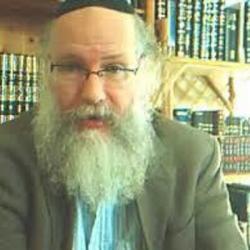The Modern world can be so confusing, so to our own Jewish Spiritual Traditions. Strife of the spirit and a thirst for spirituality and meaning is widespread. This first ever translation and commentary on the Rabbi Gershon Henoch Lainer’s, “Introduction to Hassidut,” provides a clear a path for Jewish Spirit seekers, Academics, High School, College, and Yeshiva students. The popularity of Hassidut and Kabbalah in our times is widespread, yet some spurious leader and movements take advantage of this thirst, especial with young people. The English-Hebrew edition translated and edited by Rabbi Edwards and Dr. Rabbi Shore of Jerusalem and the Hebrew University is a both and exposition of Jewish Spiritual History and a modern guide for the Perplexed. Educators such as Rabbi Adin Steinsaltz and Rabbi Chaim Brovender, were both sources of inspiration and supportive of our efforts. Rabbi Brovender initiated the project and claimed that the finished product was “a tremendous work.” Rabbi Steinsaltz, a “once in a millennium scholar,” according to both Time magazine and numerous educators, challenged me to re-write the work in a down to earth style.
Why down to earth? Not just to make it a good read, with clear translations of selections from the the Zohar and the Baal Shem Tov, but because the author, Rabbi Gershon Henoch Lainer zts”l of the Radziner Traditon (1839-1890) was a man of the world. This child prodigy, a powerhouse of a Talmudist Hassidic Rebbe, owned a gun and rode a horse. Rabbi Steinsaltz said, “he was know to be a pretty good shot.” He traveled the Mediterranean in search of the Hilzon, and ancient marine animal that produced the sky-blue dye for both the Children of Israel in the Desert and the Temple of Solomon. Not just writing in depth treatises on the creature, he found it off the shores of Italy and produced the dye (and as expected in the Jewish world, it was challenged).
Rabbi Gershon’s Introduction is one of the finest places to start for beginners. Rabbi Shlomo Carlebach, who hailed the translator as a genius, said, “it is the best introduction to Hassidic thought.” Hasidism makes the mysticism and depth of Kabbalah accessible to the common man while retaining its depth. The first half, “the History of the Secret Book,” is not just an introduction to Hasidism but both a vindication of his tradition against its detractors and a review of the history of Jewish spirituality from the Bible to the 19th century. Yet its message is timeless. The book shows how the rationality of Maimonides’ Guide was actually in agreement with the Holy Zohar, the ancient source of Kabbalah. And the second half of the work presents many of the issues found in Maimonides’ Guide. Prophecy and Miracles, Theodicy (why bad things happen to good people) and Philosophy are all explained based on ancient and medieval sources.
The money raised for this work will go towards compete vocalization of the Hebrew text as an aid to Hebrew students, Graphics, final copy edition, Layout in a facing Hebrew and English text, Graphics, an initial cash injection for Printing (Print On Demand) and Publicity.

